A Shrinking Anthropogenic Signal
Continues To Emerge In The Arctic
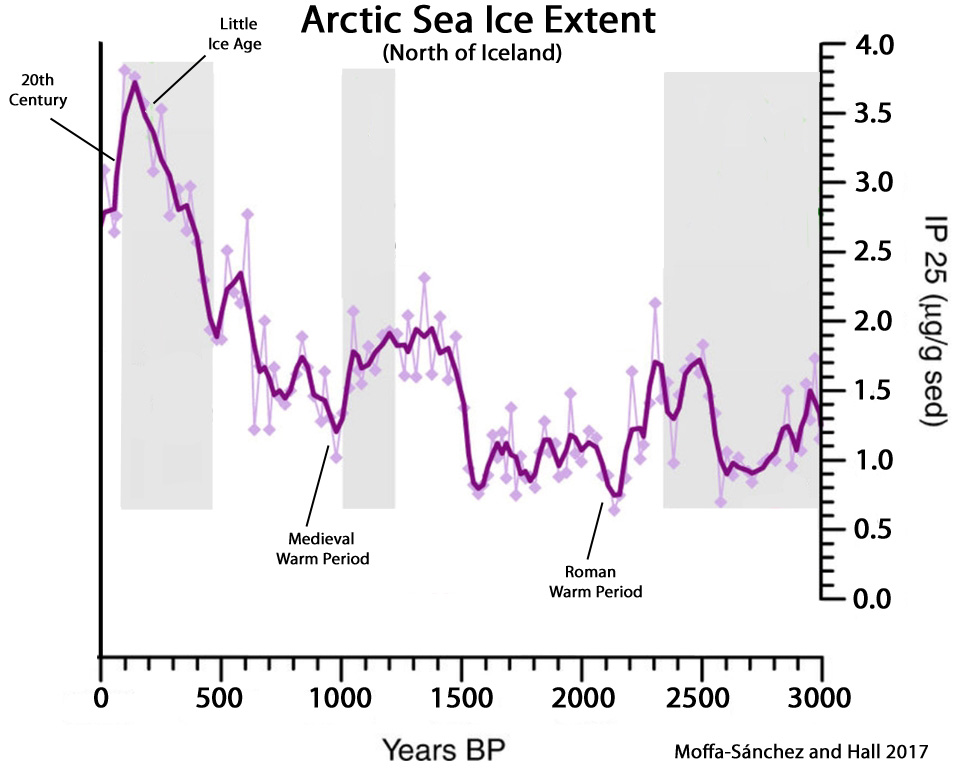
Earlier this year, Stein et al., 2017 published a reconstruction of Arctic sea ice variations throughout the Holocene that appeared to establish that there is more Arctic sea ice now than for nearly all of the last 10,000 years.
The study region, the Chukchi Sea, was deemed representative of most of the Arctic, as the authors asserted that “the increase in sea ice extent during the late Holocene seems to be a circum-Arctic phenomenon as PIP25-based sea ice records from the Fram Strait, Laptev Sea, East Siberian Sea and Chukchi Sea display a generally quite similar evolution, all coinciding with the decrease in solar radiation.”
The proxy data used to reconstruct Arctic-wide sea ice variations over the Holocene (PIP25) clearly show that modern sea ice extent has only modestly retreated relative to the heights reached during the Little Ice Age (the 17th and 18th centuries), and that the from about 1400 A.D.on through the rest of the 10,000-year-long Holocene, Arctic sea ice extent was much lower than it is today.
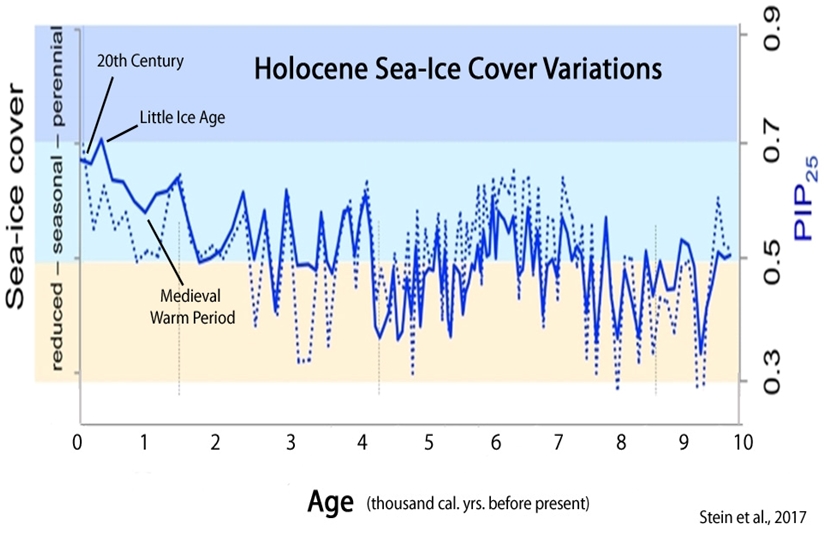
In 2014, Dr. Qinghua Ding and colleagues published a consequential paper in the journal Nature contending that much of the warming trend in the Arctic since 1979 can be traced to “unforced natural variability” rather than anthropogenic forcing.
“A substantial portion of recent warming in the northeastern Canada and Greenland sector of the Arctic arises from unforced natural variability.”
Then, a few months ago, Dr. Ding and co-authors published another Nature paper (Ding et al., 2017) that extended a natural attribution to trends in Arctic sea ice variability, concluding that as much as half of the decline in Arctic sea ice since 1979 is due to internal (natural) factors, further undermining the position that anthropogenic forcing dominates Arctic sea ice changes.
“Internal variability dominates the Arctic summer circulation trend and may be responsible for about 30–50% of the overall decline in September sea ice since 1979.”
Within the last month, two more papers have been published that further affirm the conclusion that modern Arctic sea ice extent has not changed significantly relative to even the last few centuries, nor has it fallen outside the range of natural variability.
1. Like Stein et al. (2017), Yamamoto et al., 2017 largely attribute Holocene sea ice concentration variations to solar forcing, and they assemble a reconstruction of sea ice trends for the region that once again clearly shows sea ice coverage is greater now than it has been for almost all of the Holocene.
“Millennial to multi-centennial variability in the quartz / feldspar ratio (the BG [Beaufort Gyre] circulation) is consistent with fluctuations in solar irradiance, suggesting that solar activity affected the BG [Beaufort Gyre] strength on these timescales. … The intensified BSI [Bering Strait in-flow] was associated with decrease in sea-ice concentrations and increase in marine production, as indicated by biomarker concentrations, suggesting a major influence of the BSI on sea-ice and biological conditions in the Chukchi Sea. Multi-century to millennial fluctuations, presumably controlled by solar activity, were also identified in a proxy-based BSI record characterized by the highest age resolution. … Proxy records consistent with solar forcing were reported from a number of paleoclimatic archives, such as Chinese stalagmites (Hu et al., 2008), Yukon lake sediments (Anderson et al., 2005), and ice cores (Fisher et al., 2008), as well as marine sediments in the northwestern Pacific (Sagawa et al., 2014) and the Chukchi Sea (Stein et al., 2017).”
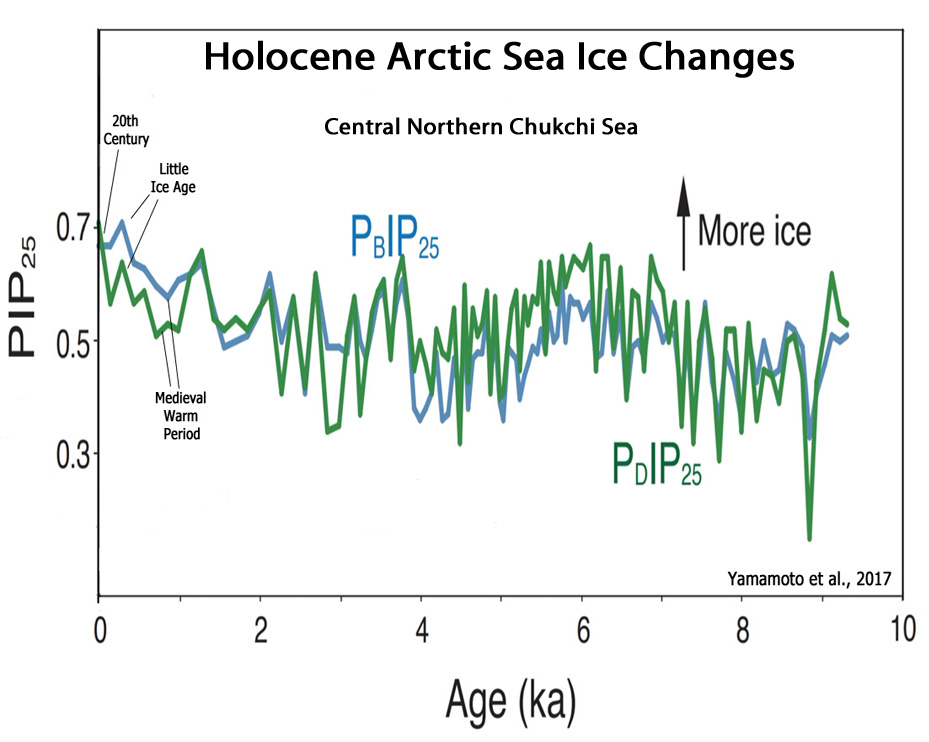
2. In another new paper, Moffa-Sánchez and Hall, 2017 analyze subpolar temperature changes, glacier advances and declines, and sea ice variations in the Labrador Sea, North Atlantic, North Iceland, Alaska, Swedish Lapland, and Northwestern Europe region.
“Paleoceanographic reconstructions from a more northward location of the polar front on the North Iceland margin show centennial-scale cold events and marked increases in sea ice with similar timing to the cold events recorded in the eastern Labrador Sea. … The records from the northernmost sites show a linear cooling trend perhaps driven by the Neoglacial decrease in summer insolation in the northern high latitudes and its effects on Arctic sea ice production. “
“Periods of increased influence of polar waters in the eastern Labrador Sea, reduced LSW [Labrador Sea Water] formation and weaker subpolar gyre largely coincide with well-established cold periods recorded in glacier advances, tree-ring and pollen records in the circum-North Atlantic and northwest Europe [Dark Ages Cold Period, Little Ice Age]. … Conversely, periods of reduced influence of polar waters in the eastern Labrador Sea, stronger subpolar gyre and increase LSW [Labrador Sea Water] formation largely coincide with mild/warm periods in Europe namely the Roman Warm Period and the Medieval Climatic Anomaly.”
The authors find that while Arctic sea ice coverage was more advanced during the Little Ice Age, sea ice concentrations in the waters north of Iceland were far lower than now from about 500 years ago onward, especially during the centuries encompassing the Medieval Warm Period (or Medieval Climate Anomaly) and Roman Warm Period.

Glacier advance and retreat for the Alaska and Swedish Lapland regions also followed the climate trends associated with the Little Ice Age, Medieval Climate Anomaly, Dark Ages Cold Period, and Roman Warm Period. During the earlier warm periods and for most of the last 3,000 years, glacier recession was more pronounced than it is now.
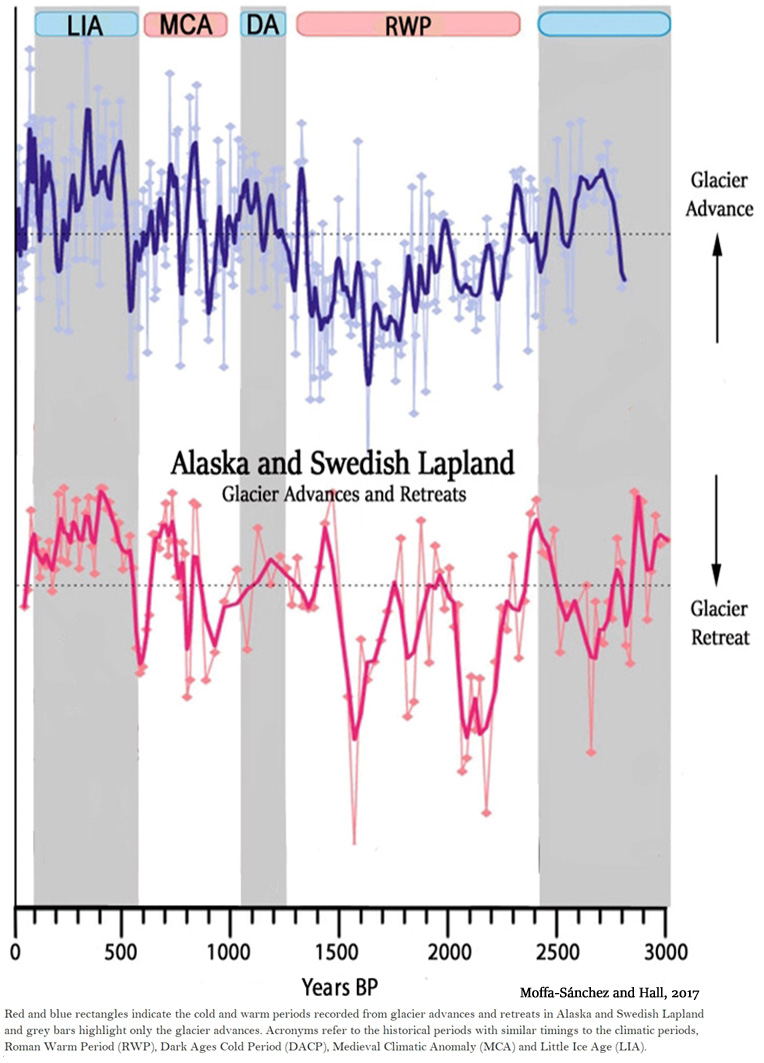
Moffa-Sánchez and Hall (2017) also report that sea surface temperatures north of Iceland were much warmer in the past than they are now.
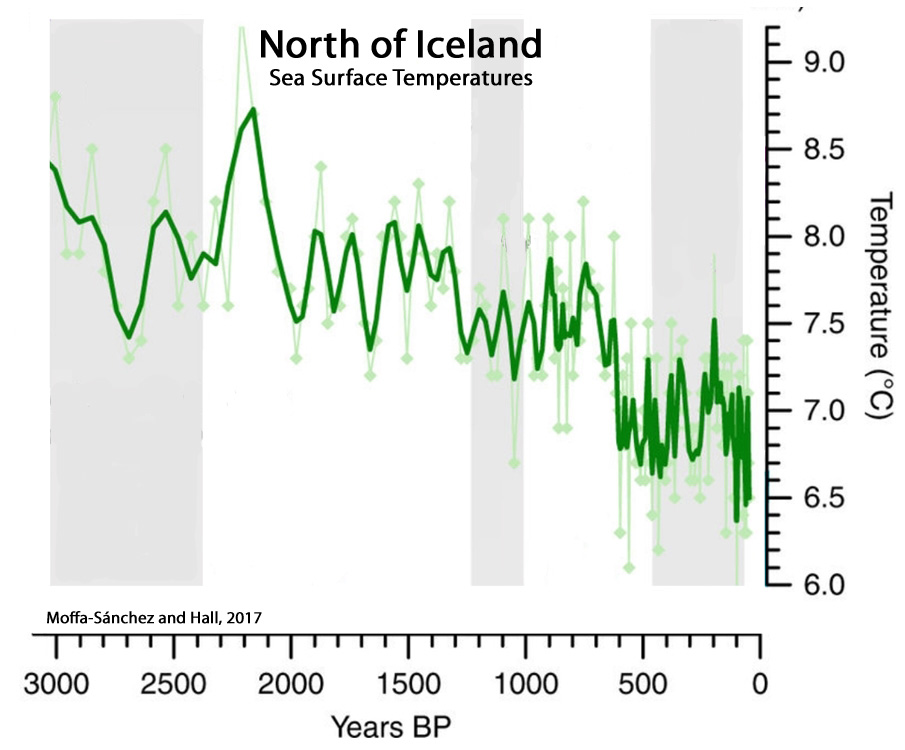
Finally, the 10-150 m layer of the Labrador Sea has also not undergone any net warming trend in the last 75 years.
Moffa-Sánchez and Hall, 2017 (supplemental)
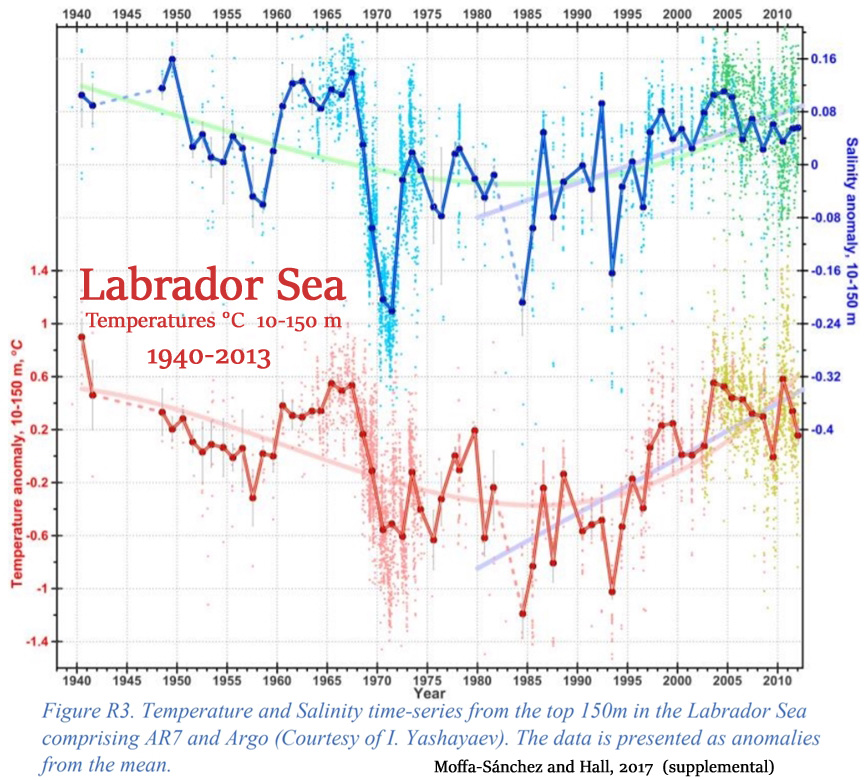
It has become increasingly apparent that there is nothing unusual or unprecedented about the amplitude of modern sea ice retreat and advance, glacier retreat and advance, and overall temperature changes in the Arctic and subpolar Arctic regions.
The lack of any definitive distinction between modern climate dynamics and “natural” changes that occurred in the past significantly compromises the detection of an anthropogenic signal.





So Sebastian recent ice extent is unusual in that it is greater than most of the last 10,000 years.
Doesn’t fit very well with human caused climate change does it?
It’s a common human bias to believe that however the world is when you are coming up is the way it’s supposed to be, and how it always has been. Who says that icecaps are “normal” at all? The southwest US is dry now, but there have been times when it was much wetter and more hospitable to humans, but we see a desert, so that’s how it is “supposed” to be. You could say the same for sea level or glaciers. If California fell into the ocean today (not that I wish them bad fortune!), the kids who are being born right now would think a world with California above the water as abnormal and even threatening! How else could the term “Climate Change” have been made into a dire prediction?